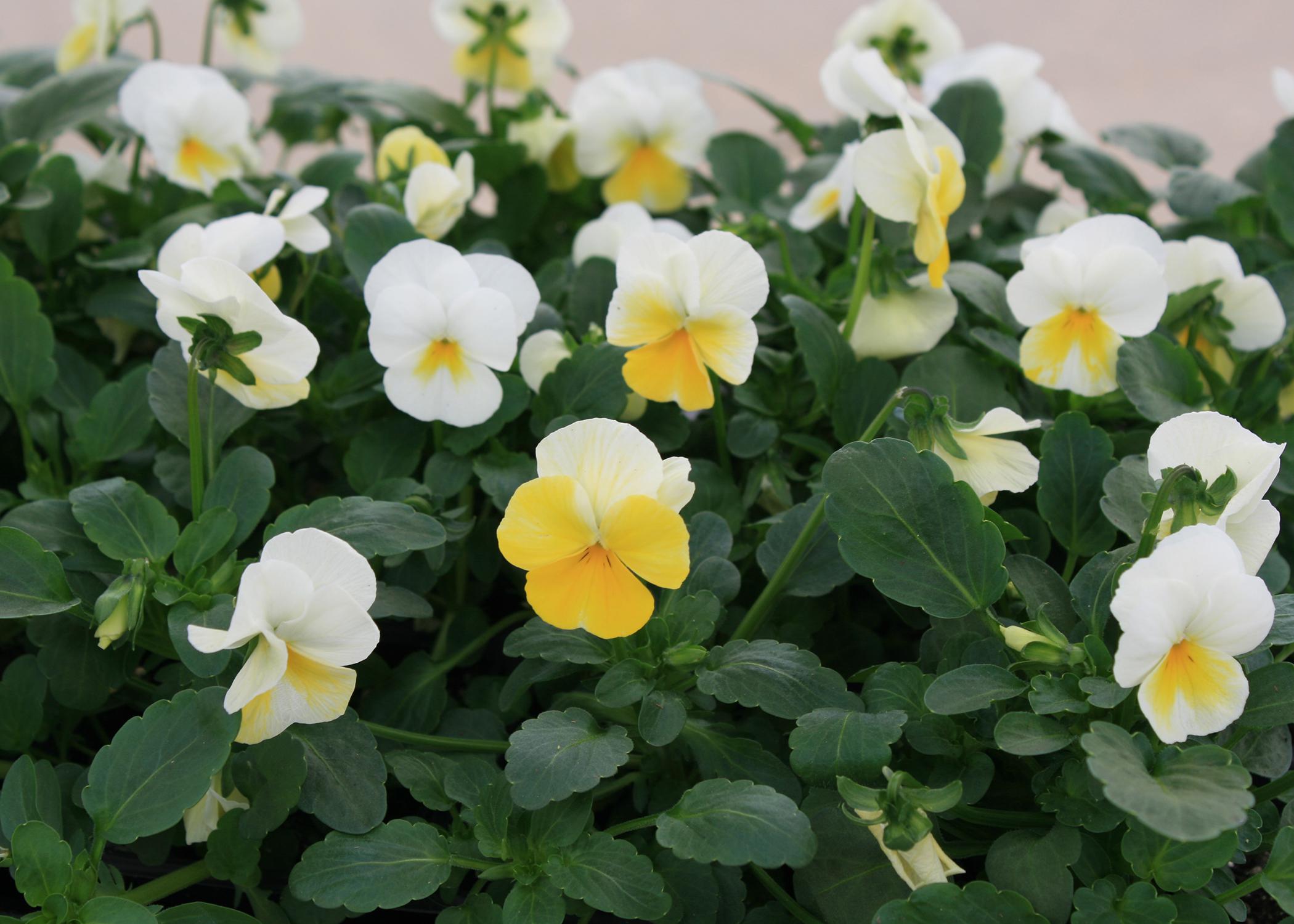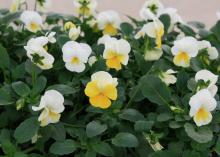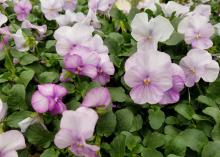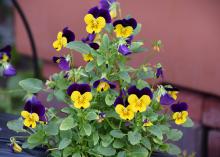Information Possibly Outdated
The information presented on this page was originally released on November 16, 2020. It may not be outdated, but please search our site for more current information. If you plan to quote or reference this information in a publication, please check with the Extension specialist or author before proceeding.
Plant violas now for fall to spring color
This past weekend, I planted the last of my Big Four must-have, cool-season color annuals: violas.
Violas are tough, and I think they tolerate cold winter weather even better than pansies. They perform well in landscape beds as well as in containers. They grow right through the Thanksgiving and Christmas holidays and are still shining in the garden at Easter and beyond.
Another name for the viola is Johnny jump up due to the fact it is a prolific seed producer. It seems wherever I have planted them in my yard, they continue to reappear in various spots around the landscape for a least a couple more years.
Now is the time to start buying and planting the violas you’re going to need this winter. The selection now is really good with lots of variety available. If you snooze, you lose and may not find the colors you want.
Sorbet is a popular viola series, and I make a point to plant them in my garden and landscape every year.
The plants are about 4 to 6 inches tall and wide. When massed, they seem to cover the landscape or container with a floral blanket. Sorbet violas resist stretching and stay compact through the season, even as temperatures start to rise in the spring.
And the best thing about Sorbet violas is that their color selection seems absolutely endless. They display these colorful flowers above the foliage to really show them off.
All violas need to grow in consistently moist soil, and it is especially important to monitor moisture in containers. If the roots get a little dry, flower production will turn off. This is not a good thing.
Be sure to plant violas in full sun and before the “real” cold weather sets in. This timing allows the root system to get established, and the gardener will be rewarded now and next spring with great color.
Violas need a consistent source of nutrients to keep them flowering at their best. I always put a couple of teaspoons of controlled-release fertilizer in the planting hole and apply water-soluble fertilizer every three weeks during normal watering. This keeps the plants at their flowering best through the cool season.
When you shop for violas, you will see them at garden centers available in sixpacks and in 3- or 4-inch pots. Which one do you choose?
If you want a more instant effect, then buy the bigger containers, even though they are a little more expensive. The pack plants are a little cheaper per plant and will have more per flat, but they will take longer to fill in. That means you will have to have a little patience. This advice applies to our other cool-season annual color such as pansies, dianthuses and snapdragons.
Remember, there is nothing lonelier than a viola planted by itself in a big flower bed. For the best landscape performance and display, always plant violas in big masses.
It’s not too late to start planting violas for fall, winter and spring color. Garden centers still have a great selection, so get yours today.





